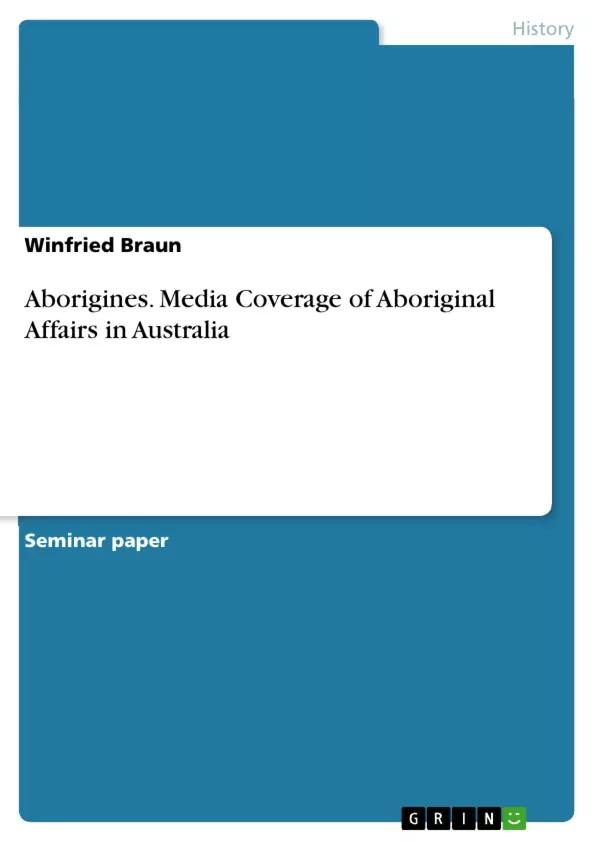In the Australian society, there seems to be an ongoing conflict, between the white british Australians, and the initial citizens of the island continent, the Indigenous people. The image that most white Australians have of those Aboriginal people, is mainly negative.
Why is that so? What is the white Australians' source of knowledge about Aboriginal people? And most importantly: What role does the mainstream media in Australia play in the continuously bad relationship between white Australians and Aboriginal
people? Does the mainstream media contribute to that conflict? And if so, in what way?
In the following, I am going to try to answer those questions. I am going to try to shed some light on the role that the media is playing in the relationship between white Australians and Aboriginal people. In order to answer those questions, it seems indispensable, to first have a look into the history of Australia and Aboriginal Australians. I will outline the most important events in the history of Australia, starting with the arrival of the Indigenous people, ending with the current situation. After that, I will amplify the Aboriginal culture, assuming that to most readers it is largely unknown.
In the main part of this work, I will then investigate the mainstream media coverage of Aboriginal affairs in Australia. I will try to ascertain in what manner the mainstream media treats Aboriginal topics. Further I want to determine if prejudices and stereotypes towards Aboriginal people exist, and how the current situation in the Australian society could be described. In the end, I will attempt to summarize my findings in a final conclusion.
Table of Contents
- Introduction
- History of Aboriginal Australians
- Aboriginal languages and culture
- The presentation of Aboriginal topics in the mainstream media
- Conclusion
- References
Objectives and Key Themes
This dissertation aims to examine the role of mainstream media in shaping perceptions and relationships between white Australians and Aboriginal people. It investigates how media coverage of Aboriginal affairs contributes to the ongoing conflict between these two groups.
- The historical context of Aboriginal Australians and their interactions with British settlers
- The portrayal of Aboriginal culture and identity in the mainstream media
- The presence of stereotypes and prejudices towards Aboriginal people in media representations
- The impact of media coverage on the social and political landscape of Australia
- The potential for media to foster understanding and reconciliation between white Australians and Aboriginal people
Chapter Summaries
- Introduction: This chapter sets the stage for the dissertation by introducing the ongoing conflict between white Australians and Aboriginal people. It highlights the need to understand the role of media in shaping these relationships and outlines the research questions that will be addressed throughout the work.
- History of Aboriginal Australians: This chapter delves into the history of Aboriginal Australians, tracing their origins, their unique cultural practices, and their encounters with British settlers. It explores the impact of colonization on Aboriginal communities and the policies implemented to control their population.
Keywords
This dissertation focuses on key concepts related to Aboriginal affairs in Australia, including Indigenous culture, mainstream media representation, colonial history, stereotypes, prejudice, social conflict, and reconciliation.
- Quote paper
- Winfried Braun (Author), 2017, Aborigines. Media Coverage of Aboriginal Affairs in Australia, Munich, GRIN Verlag, https://www.grin.com/document/417010



